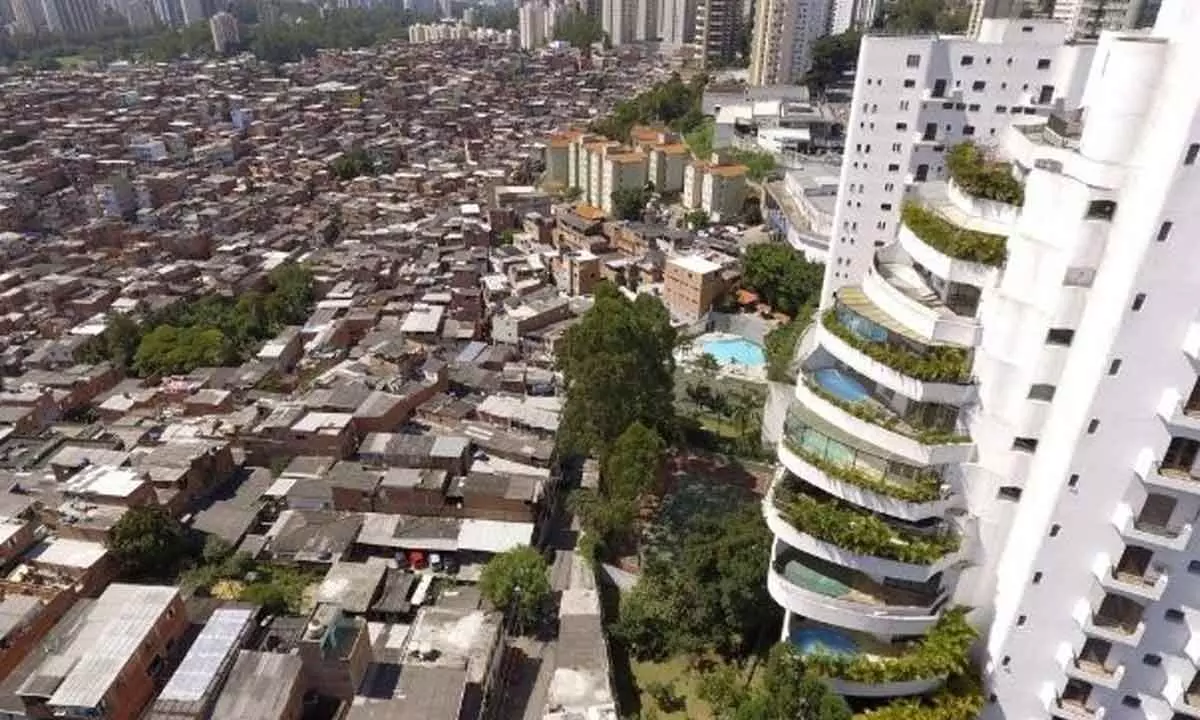The unresolved gap of economic inequality

With the global recession soaring in wake of geopolitical crises, and continuous rise in prices and short supply of energy and fuel, emerging economies have to rely on their local resources and population.
With the global recession soaring in wake of geopolitical crises, and continuous rise in prices and short supply of energy and fuel, emerging economies have to rely on their local resources and population. In the changing times, where till a few years back we were a globalizing business, today as an emerging economy we have started to 'Act Local and Think Global' to be a super power in resources and economically.
With a global hike in fuel prices, India has only raised it by 2%. As a young and emerging economy, India is all set with its initiative of 'Make In India' and booming entrepreneurship to improve economic strength. We have witnessed major shifts in the defence and manufacturing sector.
Yet, the Indian economy has its unique challenges. Being the 5th largest economy with a major segment of the middle class and an unorganised economy, the resilient Indian economy will have to surpass some basic challenges to see noticeable shifts.The importance of microeconomics and its major determinants as organisations and people plays a pivotal role in an emerging economy like India.
India & its dynamics
The Indian industry has seen a rise in entrepreneurship. We reached a landmark of 100 unicorn start-ups with a valuation of more than $300 billion. Primarily the Indian economy is domesticated and unorganised, which reflects stability, yet weakening growth. It is important to improve economic strength because the unorganized economy fears cost-push inflation. The vivid diversity of India and the rising gaps between the rich and the middle segments of society push the biggest dark gap in economic recovery. What matters most in this is how determinants of microeconomics play in the market.
Increasing gap in economic inequality
In spite of scaling up in the number of riches, India faces challenges in the socioeconomic status of people. There are various reasons for this darker side and primarily the inequality of income distribution is one of the dominating factors.
The saga of an increasing number of jobs and hiring never raises the level of purchasing power and social status. The jobs have been only to give them employability and increase organizational revenue. The second major reason for this gap is the unorganised workforce in India and this has increased after the pandemic. This increasing economic inequality is a leading reason for many casualties among women, farmers, and children. The rise in debts and considering healthcare as a luxury is increasing the mortality rate among people.
Where we are witnessing the weakening of India's rupee, it is also a major concern for increasing the gap betweenthe rich and middle segments. Inequality of income is unfair to the people and does call for mass involvement to improve the socio-economic status of the population and India. Where moonlighting has been supported by the government, it is high time that lessons from the west should be considered to narrow down the gap of economic inequality.
(Writer is a socio-economic analyst and columnist. She is also a keynote speaker and motivational speaker; www.majornamratadhasmana.com)







